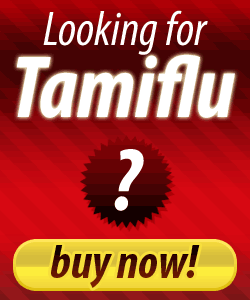Doctors should be cautious about giving Tamiflu to people to prevent them from becoming ill after they’ve been exposed to H1N1, an antiviral expert said Wednesday as he reported details of North America’s first reported case of Tamiflu-resistant H1N1 viruses.
Dr. Guy Boivin said people who’ve been exposed to the virus may already be in the process of becoming ill, a circumstance that can foster the emergence of Tamiflu-resistant viruses.
As of late last week the World Health Organization was reporting that 42 cases of Tamiflu-resistant pandemic H1N1 viruses had been seen globally since the pandemic began. The case Boivin reported on in the New England Journal of Medicine was the third, from late June.
"I have to admit I would have expected more cases, considering . . . the large volume of Tamiflu that has been used in the last few months, certainly more than in the last five years, probably," said Boivin, who is based at Laval University in Quebec City.
"But I’m still concerned that the same situation that has occurred with the seasonal H1N1 could be . . . repeated with the pandemic H1N1."
Seasonal H1N1 viruses developed resistance to Tamiflu a couple of years ago for reasons that remain unclear.
Though it had previously been thought that the mutation needed to confer resistance to the drug would cripple any resistant viruses that emerged, that proved not to be the case. The resistant viruses spread like wildfire, virtually crowding out susceptible seasonal H1N1 viruses and rendering Tamiflu useless against them.
Public health authorities worry that if that happened with seasonal H1N1 viruses, it could happen with the pandemic virus, especially at a time when much more of the drug is being used than ever before.
The case Boivin reported in the medical literature was played out in the popular press last summer.
A man from Quebec who had chronic lung disease was put on Tamiflu as prophylaxis after his teenage son, who had asthma, contracted H1N1 and was treated with the drug.
A prophylactic dose is one pill a day. A treatment dose is two pills a day.
The father started experiencing flu-like symptoms within about 24 hours of starting the drug, a likely signal that he was already sick. A prophylactic dose can stave off infection, but it isn’t powerful enough to kill off all the viruses in an infected person’s body. Those that survive are likely to be resistant to the drug.
In fact, about one-third of the cases of Tamiflu resistance that have been spotted so far have been in people who had been given the drug for prophylaxis.
"Because of that we need to limit as much as possible the use of Tamiflu prophylaxis and instead focus on early treatment," Boivin said.
He suggested if doctors do give patients Tamiflu to prevent H1N1 infection they should monitor them and switch them to a full treatment dose if they start experiencing symptoms.
Dr. Guy Boivin said people who’ve been exposed to the virus may already be in the process of becoming ill, a circumstance that can foster the emergence of Tamiflu-resistant viruses.
As of late last week the World Health Organization was reporting that 42 cases of Tamiflu-resistant pandemic H1N1 viruses had been seen globally since the pandemic began. The case Boivin reported on in the New England Journal of Medicine was the third, from late June.
"I have to admit I would have expected more cases, considering . . . the large volume of Tamiflu that has been used in the last few months, certainly more than in the last five years, probably," said Boivin, who is based at Laval University in Quebec City.
"But I’m still concerned that the same situation that has occurred with the seasonal H1N1 could be . . . repeated with the pandemic H1N1."
Seasonal H1N1 viruses developed resistance to Tamiflu a couple of years ago for reasons that remain unclear.
Though it had previously been thought that the mutation needed to confer resistance to the drug would cripple any resistant viruses that emerged, that proved not to be the case. The resistant viruses spread like wildfire, virtually crowding out susceptible seasonal H1N1 viruses and rendering Tamiflu useless against them.
Public health authorities worry that if that happened with seasonal H1N1 viruses, it could happen with the pandemic virus, especially at a time when much more of the drug is being used than ever before.
The case Boivin reported in the medical literature was played out in the popular press last summer.
A man from Quebec who had chronic lung disease was put on Tamiflu as prophylaxis after his teenage son, who had asthma, contracted H1N1 and was treated with the drug.
A prophylactic dose is one pill a day. A treatment dose is two pills a day.
The father started experiencing flu-like symptoms within about 24 hours of starting the drug, a likely signal that he was already sick. A prophylactic dose can stave off infection, but it isn’t powerful enough to kill off all the viruses in an infected person’s body. Those that survive are likely to be resistant to the drug.
In fact, about one-third of the cases of Tamiflu resistance that have been spotted so far have been in people who had been given the drug for prophylaxis.
"Because of that we need to limit as much as possible the use of Tamiflu prophylaxis and instead focus on early treatment," Boivin said.
He suggested if doctors do give patients Tamiflu to prevent H1N1 infection they should monitor them and switch them to a full treatment dose if they start experiencing symptoms.




No comments:
Post a Comment
Note: Only a member of this blog may post a comment.